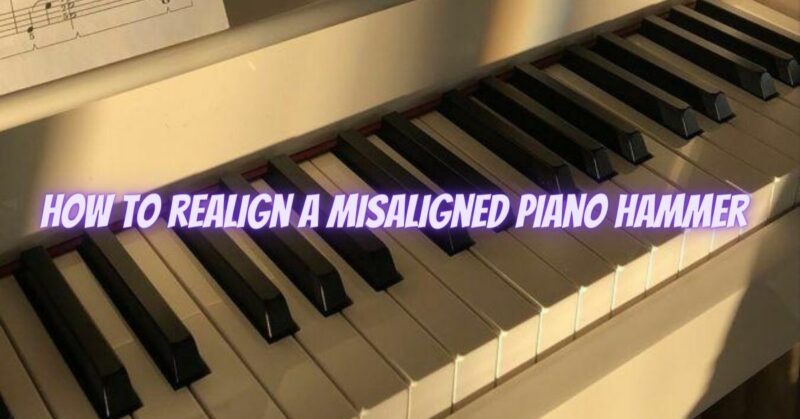A misaligned piano hammer can cause uneven tone and affect the overall playability of the instrument. Realigning the hammer is a delicate process that requires precision and attention to detail. Before attempting any adjustments, keep in mind that if you are not confident or experienced in piano repair, it’s best to seek the assistance of a professional piano technician. However, if you feel comfortable making minor adjustments, here is a step-by-step guide to help you realign a misaligned piano hammer:
- Prepare the Workspace: Ensure you have a clean and well-lit workspace. Have the necessary tools ready, including a hammer voicing needle, voicing felt, sandpaper, and a soft cloth.
- Open the Piano Lid: Lift the piano lid and prop it open securely to access the piano action. Locate the misaligned hammer and identify the extent of the misalignment.
- Identify the Misaligned Hammer: Gently press the key associated with the misaligned hammer to observe its movement. Look for any uneven or inconsistent striking of the strings.
- Inspect the Hammer Flange and Knuckle: Examine the hammer flange and knuckle for any signs of wear, damage, or misalignment. If you notice visible issues, such as cracks or gaps, consult a professional piano technician for further assessment.
- Adjust the Hammer Flange: Using a voicing needle, carefully adjust the flange by bending it slightly to the left or right as needed. Make subtle adjustments to avoid overcorrecting the alignment.
- Check the Hammer Alignment: Press the key again to check if the hammer strikes the strings cleanly and uniformly. If the misalignment persists, continue with gentle adjustments until the hammer aligns properly.
- Voicing and Shaping (Optional): If the hammer felt has minor inconsistencies, you can use the voicing needle to shape the felt and achieve a more consistent tone. Be cautious not to remove too much felt, as this can affect the hammer’s weight and responsiveness.
- Test the Piano Key Responsiveness: Play the key repeatedly to ensure that the realigned hammer is striking the strings evenly and producing a consistent tone.
- Fine-Tuning (If Necessary): If you notice any issues with the piano’s tone or playability, it’s best to have the entire piano action regulated by a professional technician. They can perform a comprehensive adjustment to ensure the piano’s overall responsiveness and tonal balance.
- Close the Piano Lid: Once you have completed the adjustments and are satisfied with the realigned hammer’s performance, gently close the piano lid.
Remember, piano action adjustments require precision, and improper handling can cause more harm than good. If you are unsure or uncomfortable with realigning the piano hammer yourself, always seek professional assistance to avoid any potential damage to your instrument. Regular piano maintenance and tuning will help ensure that your piano continues to produce beautiful and harmonious music for years to come.


